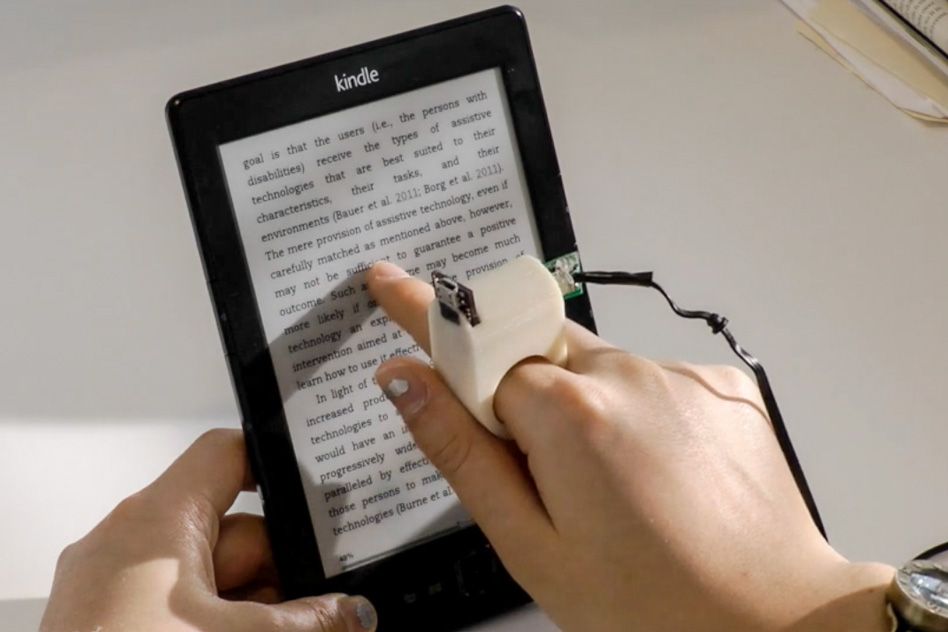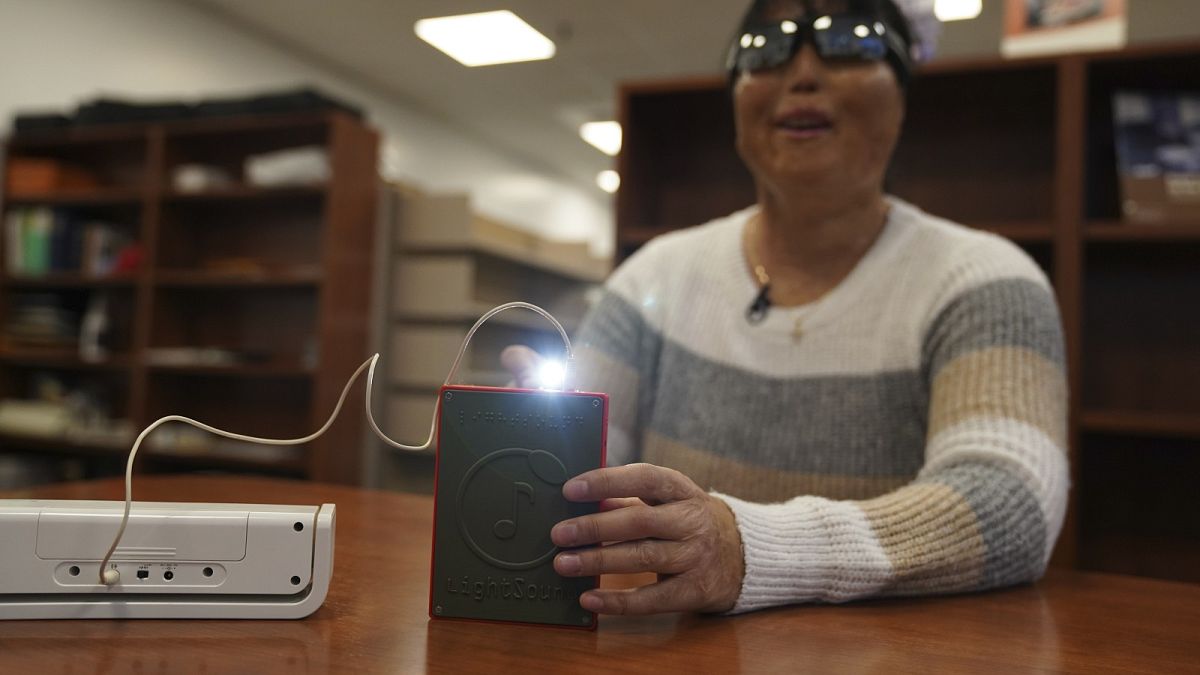Braille Displays and Notetakers: Key Tools for Learning and Work
Wiki Article
Discover Ingenious Devices Designed for the Visually Impaired
The development of innovative tools for the aesthetically damaged stands for a substantial innovation in access and freedom. Technologies such as wise glasses with AI abilities and mobile applications created to offer auditory descriptions are improving day-to-day experiences for customers.Smart Glasses for Navigating

Smart glasses created for navigating are revolutionizing the method aesthetically impaired individuals communicate with their setting. These sophisticated devices utilize a combination of cam technology, expert system, and auditory responses to supply real-time information regarding surroundings. By utilizing barrier discovery systems, smart glasses can alert users to potential risks, enabling safer movement in both unfamiliar and familiar setups.
The integration of GPS technology further boosts navigating abilities, enabling individuals to receive auditory instructions as they relocate. This hands-free approach not just cultivates freedom however likewise empowers aesthetically damaged people to navigate urban landscapes with increased self-confidence. In addition, several clever glasses are outfitted with attributes that determine sites and street signs, providing contextual information that boosts the individual experience.
Additionally, the advancement of these devices is constantly advancing, with firms functioning to enhance the accuracy of item recognition and expand the array of navigational attributes. As wise glasses become extra budget friendly and easily accessible, they hold the prospective to considerably change day-to-day live for aesthetically impaired customers. Eventually, these innovative devices represent a crucial action toward inclusivity, offering boosted flexibility and a higher sense of autonomy for individuals browsing the world around them.

Mobile Apps for Daily Living
Exactly how can mobile applications improve the daily lives of aesthetically damaged individuals? Mobile apps are transforming the way aesthetically damaged individuals browse their settings, handle daily jobs, and access details. These applications give necessary assistance through various functionalities, cultivating independence and improving high quality of life.Numerous innovative mobile apps are made particularly for daily living. For example, apps like Be My Eyes attach visually damaged individuals with sighted volunteers via video clip calls, permitting them to get real-time aid with tasks such as reading labels or browsing unknown rooms. In A Similar Way, Seeing AI, developed by Microsoft, makes use of man-made intelligence to explain environments, read message, and recognize objects, effectively transforming a smart device into an effective tool for everyday aid.
Additionally, navigating applications tailored for the visually damaged, such as Aira and BlindSquare, offer audio-based directions and ecological info, making it possible for individuals to traverse their environments safely and confidently. Beyond navigation and prompt assistance, mobile applications likewise sustain organization and job management, with attributes that help individuals establish pointers, produce to-do lists, and track visits. In recap, mobile applications function as indispensable sources, equipping aesthetically damaged individuals to lead even more independent and meeting lives.
Wearable Technologies for Assistance
Empowerment through modern technology is increasingly apparent in the world of wearable devices developed to assist aesthetically impaired individuals. These innovative tools incorporate effortlessly into life, enhancing navigation and giving important feedback to users. For example, wise glasses equipped with electronic cameras can check out and recognize faces message out loud, enabling users to connect even more confidently in specialist and social setups.An additional significant improvement is using haptic responses systems in wearable gadgets. These systems utilize resonances or other responsive signals to convey details regarding the user's environment, such as barriers or modifications in terrain, improving movement and safety. Wearable modern technologies additionally include wristbands that attach to mobile phones, signaling individuals to notices through refined vibrations, thus improving connectivity without dependence on visual hints.
As these technologies proceed to advance, they are not just improving freedom for visually damaged individuals however also cultivating a better sense of incorporation in society. By connecting the void in between challenges dealt with in day-to-day living and the potential for autonomy, wearable innovations function as essential devices in the pursuit for equality and empowerment for those with visual disabilities.
Sound Summary Tools
Audio description tools play an essential function in improving accessibility for visually impaired individuals, supplying them with the capability to involve with aesthetic media. Wearable technology for low vision. These tools offer narrated descriptions of crucial visual elements in movies, tv programs, and live efficiencies, ensuring that users can completely understand the context and emotions communicated through visualsAudio description can be integrated into numerous systems, consisting of streaming solutions, cinema screenings, and live theater. Many preferred streaming solutions currently include audio description as an availability function, allowing viewers to pick it conveniently. In enhancement to traditional media, specialized apps also exist, providing audio summaries for art exhibits, museums, and other social events.
The performance of audio summary rests on the skill of the storytellers, who must share visual details succinctly without taking away from the original audio. Technologies in this area are also paving the method for more personalized experiences, where customers can change the level of information and pacing according to their preferences.
Braille Innovations and Devices
Braille advancements and gadgets have actually dramatically changed the method aesthetically impaired individuals connect with text and information. Modern innovations have actually led to the advancement of functional tools that improve literacy and freedom among individuals.
In addition, portable Braille notetakers incorporate traditional Braille input with modern-day capabilities, helping with note-taking, organizing, and document editing on the move. Assistive technology for the blind. These portable Wearable technology for low vision devices commonly feature text-to-speech abilities, linking the gap in between Braille and acoustic information
On top of that, cutting-edge Braille printers have emerged, permitting users to create Braille tags, records, and educational products successfully. This accessibility promotes better engagement in professional and instructional environments, eventually advertising inclusivity.
In addition, research into wise Braille innovations proceeds to increase. Instruments that include expert system are being explored to offer real-time navigation help and contextual info, boosting the customer experience in varied setups. On the whole, these innovations reflect a commitment to empowering visually impaired individuals through technology, ensuring they can quickly gain access to and engage with the world around them.

Final Thought
The advancement of innovative tools for the visually impaired considerably improves self-reliance and high quality of life. These innovations not just foster better incorporation yet additionally advertise freedom in daily tasks, inevitably adding to an extra accessible and equitable society for visually impaired people.As wise glasses come to be a lot more inexpensive and obtainable, they hold the possible to considerably change day-to-day life for aesthetically damaged users. Mobile applications are changing the method aesthetically damaged customers navigate their settings, take care of daily jobs, and gain access to info. Applications like Be My Eyes link visually damaged users with sighted volunteers via video clip calls, permitting them to get real-time assistance with jobs such as checking out tags or navigating strange areas.Additionally, navigating apps customized for the aesthetically damaged, such as Aira and BlindSquare, provide audio-based instructions and environmental details, allowing users to traverse their environments securely and confidently.The innovation of innovative devices for the visually impaired significantly improves freedom and high quality of life.
Report this wiki page